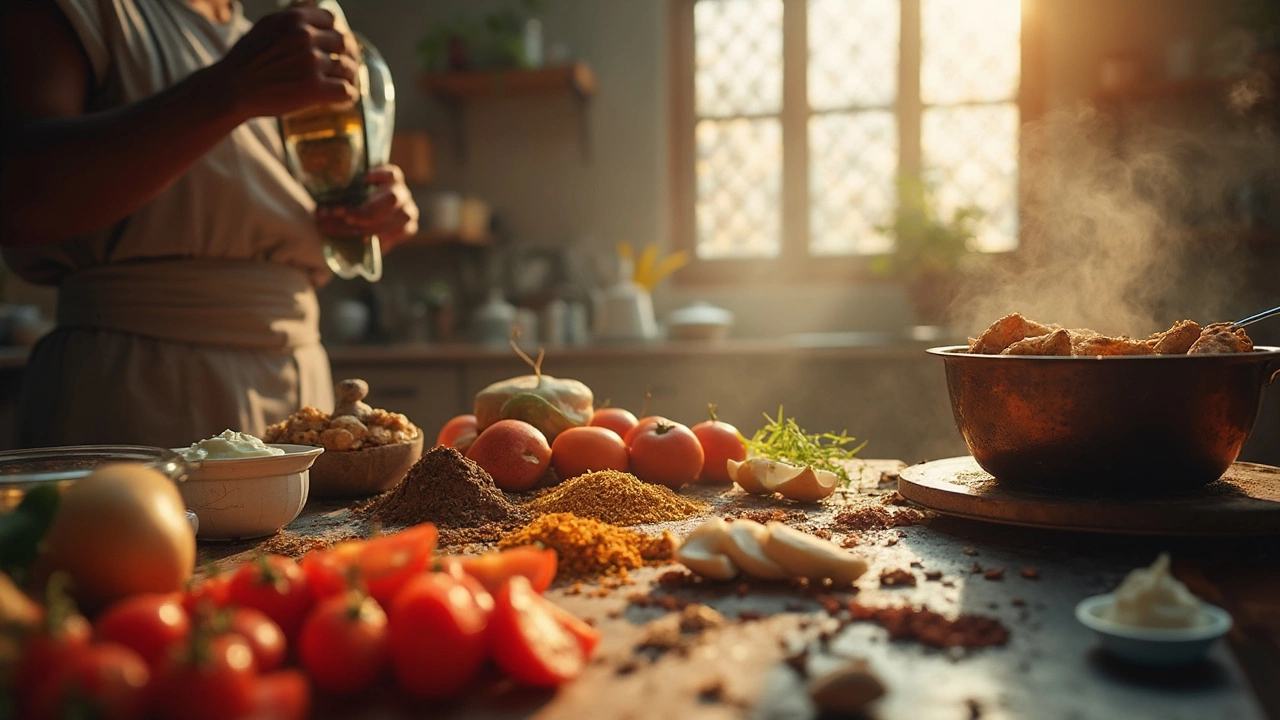Thick Curry: The Heart of Rich Indian Sauces
When working with Thick Curry, a sauce‑rich Indian dish where the gravy clings to each ingredient. Also known as rich curry, it forms the backbone of many regional meals. It relies heavily on curry ingredients, spices, aromatics, and base liquids that build flavor and often shares traits with creamy curry, a subtype that uses dairy or coconut for silkiness. In plain terms, a thick curry is any Indian preparation where the gravy is deliberately dense enough to coat rice, roti, or meat without sliding off.
Key Components and How They Connect
First, the choice of thickening agent defines the texture. Gram flour (besan), ground nuts, cashew paste, or even yogurt can be whisked in during the simmer stage; each adds body and a subtle flavor note. Second, the spice blend – typically a mix of cumin, coriander, turmeric, red chile, and garam masala – creates the aromatic backbone. When you combine a rich spice base with a proper thickener, you get the semantic triple: *Thick Curry* requires *curry ingredients* and *uses* *thickening agents*. Regional styles tweak this formula: a Punjabi butter chicken leans on cream, a Kerala fish curry uses coconut milk, while a Gujrati dal‑based curry might thicken with pureed lentils. These variations illustrate another triple: *Regional cuisine* influences *thick curry* by altering *base liquids*. The cooking technique matters, too – low‑and‑slow simmering lets starches and fats embed, turning a watery broth into a velvety coat. That relationship forms the third triple: *Gentle simmering* enhances *thickening* and yields *smooth texture*.
Understanding these links helps you troubleshoot common issues. If your curry stays runny, check the amount of ground nuts or gram flour; if it turns grainy, the heat may have been too high, breaking down the fats. Balancing acidity (like a splash of lemon) with richness prevents the sauce from feeling heavy – a tip many chefs use in both creamy and non‑creamy thick curries. Whether you favor vegetarian paneer‑laden sauces or meat‑heavy gravies, the core principles stay the same: pick your spices, select the right thickener, and simmer patiently.
Below you’ll find a hand‑picked collection of articles that dive deeper into each of these elements. From the science behind creamy textures to the essential spice pantry, the posts cover beginner shortcuts, expert tricks, and regional stories. Keep reading to see how these ideas play out in real recipes, and you’ll be ready to craft your own perfect thick curry in no time.

How Indian Restaurants Make Curry So Thick: The Secrets Behind Perfect Chicken Curry
Ever wondered why chicken curry from Indian restaurants turns out so thick and rich compared to homemade versions? This article uncovers the simple but game-changing tricks Indian chefs use to achieve that perfect, velvety curry texture. We'll break down what really goes into those silky sauces and how you can use those methods in your own kitchen. Get ready to level up your curry game with practical tips and step-by-step explanations. Ditch the guesswork and get results that taste just like a good dhaba or your favorite local Indian eatery.